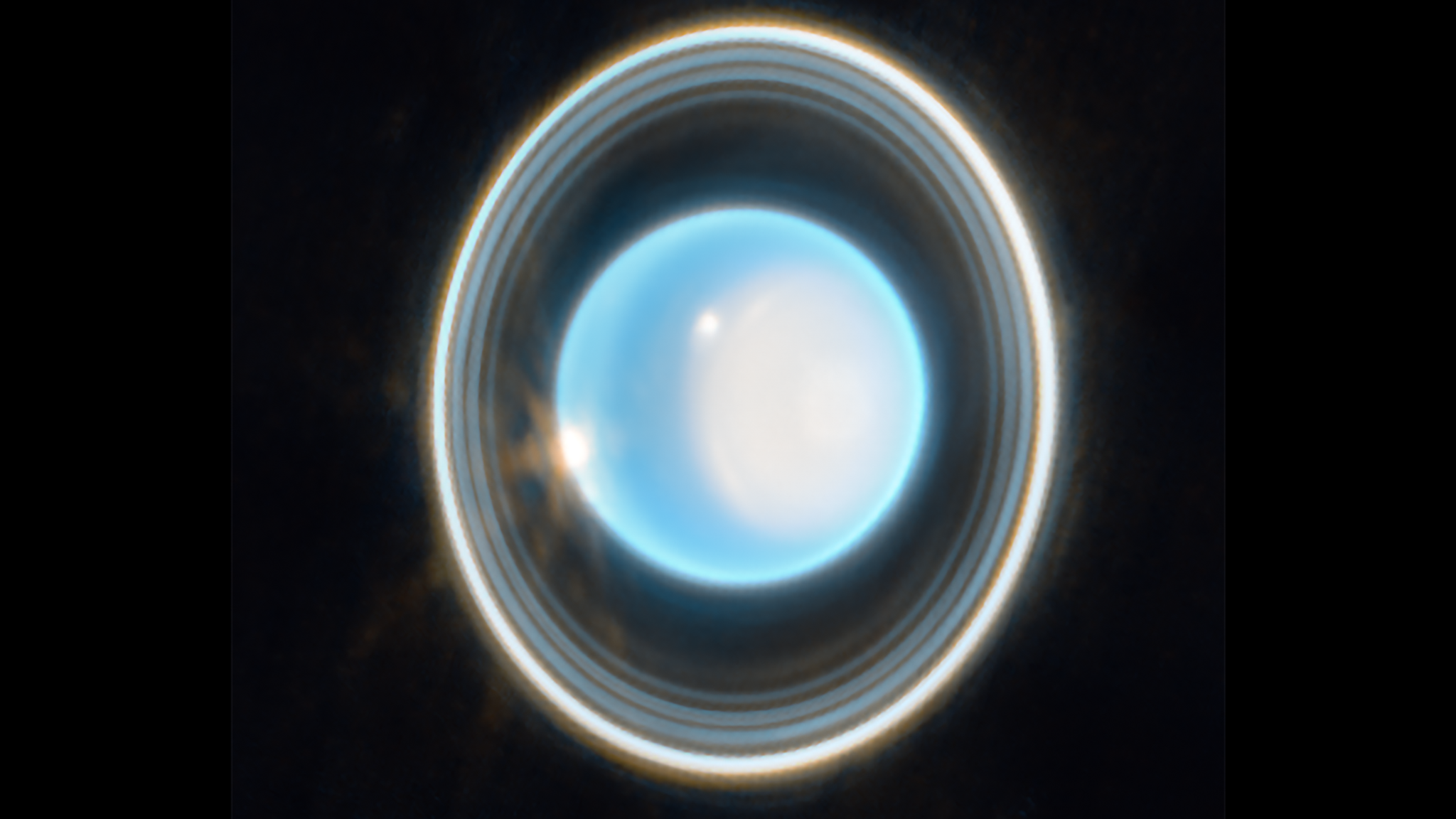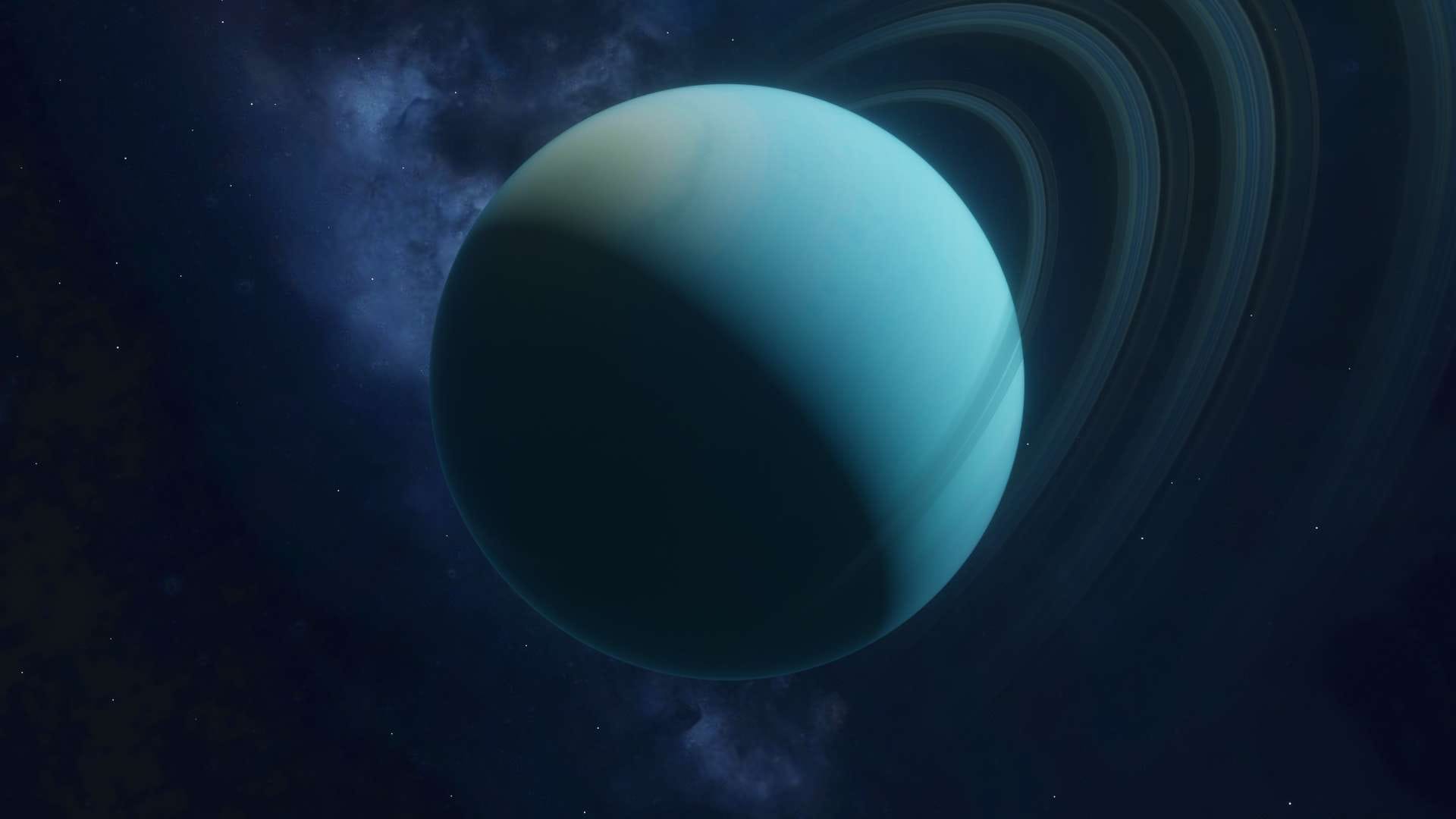NASA Releases New Images Of Uranus With Greater Detail Than Ever
NASA releases new images of Uranus, the seventh planet from the sun on Monday that are more detailed than ever before. The James Webb Space Telescope took the new pictures of Uranus.
Author:Hajra ShannonReviewer:Paula M. GrahamDec 19, 20231.1K Shares57K Views

NASA releases new images of Uranus, the seventh planet from the sun on Monday that are more detailed than ever before. The James Webb Space Telescope took the new pictures of Uranus. They are better than the pictures that came out earlier this year because they capture "additional wavelength coverage for a more detailed look"at the planet.
The new shots give us a rare look at the "elusive" Zeta ring, which is the faintest and most diffuse ring closest to the planet. It is shown in a reddish-brown color. A lot of other rings were caught on camera glowing blue. The powerful Webb telescope also took pictures of the planet's atmosphere, including Uranus' yearly north polar cloud cap and several storms close to it.
NASA Releases New Images Of Uranus
New pictures taken by the very powerful James Webb Space Telescope (JWST) show Uranus and its rings in all their bright glory. NASA was able to take pictures of the planet's rings, moons, storms, and even a yearly polar cap thanks to the telescope's high sensitivity. NASA said in a press release:
“„With Webb’s unparalleled infrared resolution and sensitivity, astronomers now see Uranus and its unique features with groundbreaking new clarity. These details, especially of the close-in Zeta ring, will be invaluable to planning any future missions to Uranus.- NASA
They pointed out that this year's earlier version only had a two-color version of the polar cap.
“„Webb captured this dynamic world with rings, moons, storms, and other atmospheric features - including a seasonal polar cap.- NASA
In the 1980s, Voyager 2 saw bands that made Uranus look like a calm, solid blue ball. Webb is seeing a strange and changing ice world with interesting atmospheric features in infrared bands.
The planet's yearly north polar cloud cap is one of the most interesting of these. Some parts of the cap are easier to see in these later pictures than in the Webb picture from earlier this year. Some of these are the inner cap, which is bright and white, and the dark lane at the bottom of the polar cap, farther down in latitude.
Several bright storms can also be seen near and below the polar cap's southern edge. The number of these storms, as well as how often and where they happen in Uranus's atmosphere, may be caused by a mix of weather and yearly changes.
As the world gets closer to the solstice and gets more sunlight, its pole starts to point toward the sun, making the polar cap stand out more. This is Uranus's next solstice, which will happen in 2028. Astronomers are excited to see if the structure of these traits changes.
Webb will help scientists figure out how Uranus's storms are affected by seasonal and meteorological factors. This is very important for understanding the planet's complicated atmosphere.
The planet is one of a kind because it spins on its side. This shows the seasonal polar cap that the new shots show in more detail.
“„One of the most striking of these is the planet’s seasonal north polar cloud cap. Compared to the Webb image from earlier this year, some details of the cap are easier to see in these newer images. These include the bright, white, inner cap and the dark lane in the bottom of the polar cap, toward the lower latitudes,.- NASA
“„Several bright storms can also be seen near and below the southern border of the polar cap. The number of these storms, and how frequently and where they appear in Uranus’s atmosphere, might be due to a combination of seasonal and meteorological effects,.- NASA
NASA also said that these pictures of Uranus can help scientists study other exoplanets that are about the same size as Earth. They called Uranus an "exoplanet in our backyard."They want to learn “how planets of this size work, what their meteorology is like, and how they formed.”
“„This can in turn help us understand our own solar system as a whole by placing it in a larger context.- NASA
Final Thoughts
NASA put out new pictures of Uranus on Monday (Dec. 18), which showed the seventh planet from the sun in more detail than before. The powerful James Webb Space Telescope of the American Space Agency took pictures of the planet's rings, moons, storms, and other features of its atmosphere, such as a yearly polar cap.
The most recent pictures of the icy planet show many inner and outer rings, nine of its 27 known moons, and its yearly polar cap. In the rings, some of the planet's small moons could also be seen.

Hajra Shannon
Author

Paula M. Graham
Reviewer
Latest Articles
Popular Articles
